Space

Early analysis of the asteroid Bennu sample returned by NASA’s OSIRIS-REx mission has revealed dust rich in carbon, nitrogen, and organic compounds, all of which are essential components for life as we know it. Dominated by clay minerals, particularly serpentine, the sample mirrors the type of rock found at mid-ocean ridges on Earth. »

The European Southern Observatory (ESO) has signed an agreement for the design and construction of ANDES, the ArmazoNes high Dispersion Echelle Spectrograph. »
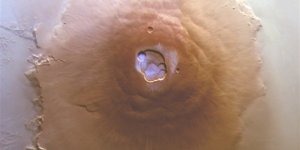
Water frost has been detected at the equator of Mars, a region where it was previously believed to be impossible. »
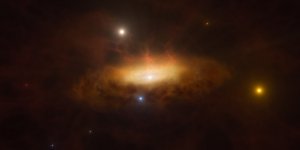
In late 2019 the previously unremarkable galaxy SDSS1335+0728 suddenly started shining brighter than ever before. »

After months of driving, Perseverance has finally arrived at ‘Bright Angel’, discovering oddly textured rock unlike any the rover has seen before. »

Astronomers have used new data from NASA's Hubble Space Telescope and the retired SOFIA (Stratospheric Observatory for Infrared Astronomy) as well as archival data from other missions to revisit one of the strangest binary star systems in our galaxy – 40 years after it burst onto the scene as a bright and long-lived nova. »

The two earliest and most distant galaxies yet confirmed, dating back to only 300 million years after the Big Bang, have been discovered using NASA’s James Webb Space Telescope (JWST), an international team of astronomers today announced. »

An analysis of data from Magellan’s radar finds two volcanoes erupted in the early 1990s. This adds to the 2023 discovery of a different active volcano in Magellan data. »

An international team of astronomers, led by the University of Cambridge, has used the James Webb Space Telescope to find evidence for an ongoing merger of two galaxies and their massive black holes when the Universe was only 740 million years old. This marks the most distant detection of a black hole merger ever obtained and the first time that this phenomenon has been detected so early in the Universe. »

A planet that could resemble a smaller version of our own Neptune orbits one of two Sun-like stars that also orbit each other. The planet dwells in the “habitable zone,” with a potentially moderate temperature, and poses a challenge to prevailing ideas of planet formation. »

Data from NASA’s retired Spitzer Space Telescope has given scientists new insights into why some supermassive black holes shine differently than others. »
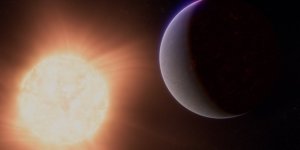
Researchers using NASA’s James Webb Space Telescope may have detected atmospheric gases surrounding 55 Cancri e, a hot rocky exoplanet 41 light-years from Earth. This is the best evidence to date for the existence of any rocky planet atmosphere outside our solar system. »
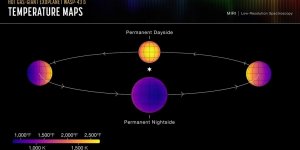
Webb’s MIRI instrument, managed through launch by JPL, has illuminated conditions on a planet that’s Jupiter-size but closer to its star than Mercury is to the Sun. »
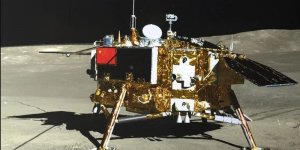
China is preparing to launch a lunar probe that would land on the far side of the moon and return with samples that could provide insights into geological and other differences between the less-explored region and the better-known near side. »

After some inventive sleuthing, the mission team can — for the first time in five months — check the health and status of the most distant human-made object in existence. »

When it launches in October, the agency’s Europa Clipper spacecraft will carry a richly layered dispatch that includes more than 2.6 million names submitted by the public. »

The most surprising revelation from NASA’s Curiosity Mars Rover — that methane is seeping from the surface of Gale Crater — has scientists scratching their heads. »

Imagery from the solar-powered spacecraft provides close-ups of intriguing features on the hellish Jovian moon. »

Astronomers have identified the most massive stellar black hole yet discovered in the Milky Way galaxy. »

When astronomers looked at a stellar pair at the heart of a stunning cloud of gas and dust, they were in for a surprise. Star pairs are typically very similar, like twins, but in HD 148937, one star appears younger and, unlike the other, is magnetic. »

Using first-year data from the Dark Energy Spectroscopic Instrument Survey, researchers have reported new measurements of dark energy and its effect on the expanding universe. »

NASA’s LRO (Lunar Reconnaissance Orbiter), which has been circling and studying the Moon for 15 years, captured several images of Korea Aerospace Research Institute’s Danuri lunar orbiter last month. The two spacecraft, traveling in nearly parallel orbits, zipped past each other in opposite directions between March 5 and 6, 2024. »

By measuring the rotation periods of hundreds of thousands of stars, NASA’s Nancy Grace Roman Space Telescope promises to bring new understandings of stellar populations in our Milky Way galaxy after it launches by May 2027. »

The 24th sample taken by the six-wheeled scientist offers new clues about Jezero Crater and the lake it may have once held. »

Astronomers have found three previously unknown moons in our solar system — two additional moons circling Neptune and one around Uranus. »

At least one in a dozen stars show evidence of planetary ingestion. »

A new image from the Event Horizon Telescope (EHT) collaboration has uncovered strong and organised magnetic fields spiraling from the edge of the supermassive black hole Sagittarius A* (Sgr A*). »

Jets emerge from the cocoon of a newly forming star to blast across space, slicing through the gas and dust of a shining nebula in this new image from NASA’s Hubble Space Telescope. »

It takes two to tango, but in the case of brown dwarfs that were once paired as binary systems, that relationship doesn't last for very long, according to a recent survey from NASA's Hubble Space Telescope. »

A NASA-funded team of scientists has discovered long-lasting radio signals emanating from the Sun that are similar to those associated with auroras – northern and southern lights – on Earth. »

After NASA’s historic Double Asteroid Redirection Test, a JPL-led study has shown that the shape of asteroid Dimorphos has changed and its orbit has shrunk. »

An international team of astronomers used Webb’s MIRI (Mid-Infrared Instrument) to identify a variety of icy compounds made up of complex organic molecules like ethanol (alcohol) and likely acetic acid (an ingredient in vinegar). »

Two giant planets comparable to our own system’s Saturn orbit a star not unlike our Sun some 700 light-years away. »

April 17, 2021, was a day like any other day on the Sun, until a brilliant flash erupted and an enormous cloud of solar material billowed away from our star. »

The ice-covered Jovian moon generates 1,000 tons of oxygen every 24 hours – enough to keep a million humans breathing for a day. »